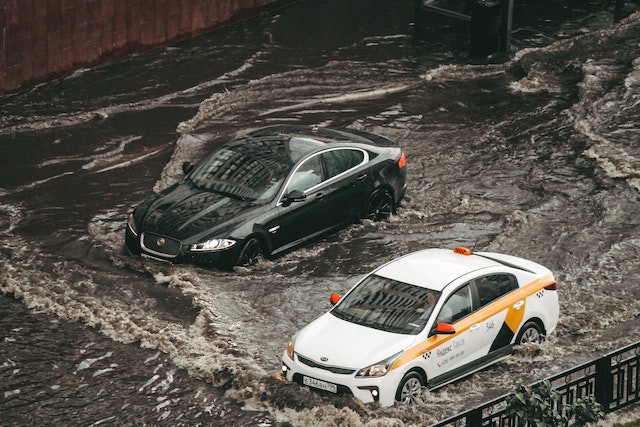10.25.22
How to Avoid Buying a Flood-Damaged Vehicle

Use your senses and get an inspection to avoid buying a car damaged by flooding.
As videos from areas hit by Hurricane Ian illustrate mass damage, they’ve also shown hundreds of flooded vehicles. Many of which will be declared a total loss. However, some will inevitably end up on the used car market in places far from the catastrophe — such as Michigan. Plus, floods take place all over the U.S., meaning used car buyers everywhere must be careful. Here are tips to help you avoid buying a flood damaged vehicle.
Do a sniff test
Check for a musty smell in the cabin and trunk. Sellers may try to cover up smells with air fresheners or have the windows open when you come to see the car. Spend a few moments in the car with the windows up. If you have a poor sense of smell, bring along someone who can let you know if the car passes the sniff-test.
Listen carefully
Do seatbelts operate smoothly, or do you hear something unusual when the belts are pulled out and retracted? Floods can deposit grit into a car’s interior mechanisms. Listen carefully as you operate seatbelts, seats and doors to the glove compartment and center console.
Feel for brittle wires and moisture
Bend wires to see if they feel flexible. Brittle wires could indicate flood damage. Feel for dampness in the carpet, padding and seat crevices.
Visually examine the car
Carefully look over the car’s interior and exterior. Search for these signs of flooding:
- Upholstery and carpet that is stained or doesn’t match
- Rust in places you wouldn’t expect, like hinges, under the hood and around doors
- Moisture build up in in the instrument panel or exterior lights
- Silt deposited under seats, around pedals, in the trunk, in the engine or in the glove compartment
- An air filter with water stains
Check the title history
A vehicle’s title may help you spot a flood damaged car. The State of Michigan advises:
Check the vehicle history. Get the VIN (vehicle identification number) and trace its history through the National Motor Vehicle Title Information System database for a small fee. The National Motor Vehicle Information System is administered by the U.S. Department of Justice. Some consumers also choose to trace vehicle history using commercially available reports such as Experian’s Auto Check or CarFax. A vehicle history should tell you if the car’s been in a flood region or issued a flood or salvage title. Remember though, these databases do not always have up-to-date or complete information about a vehicle (which is why the independent inspection is critical).
Some titles will even have a “salvage” or “flood” stamp. Discover what you should know before buying a salvage vehicle.
Get an independent inspection
A trained professional can clue you in to water damage to unseen parts of the car, such as the electrical system, air bag systems and sensors. Paying for an independent evaluation could be worth the fee because the inspector can identify hidden problems.
When you find a good used car
Despite flood-damaged cars being on the market, there are many great used cars available that can give you years of service. When you find a good used car, turn to us for a competitive Consumers auto loan.
Federally insured by NCUA


